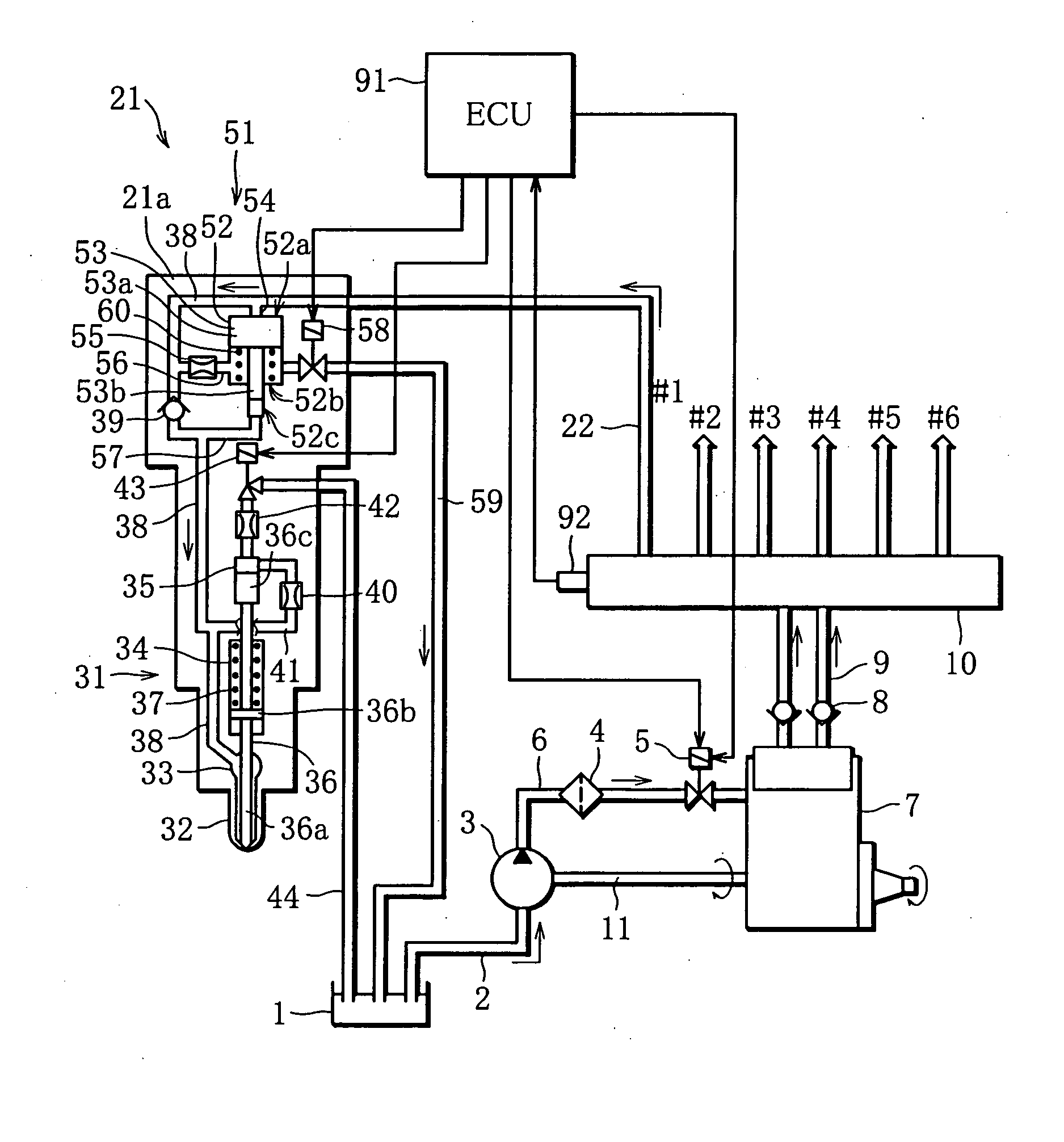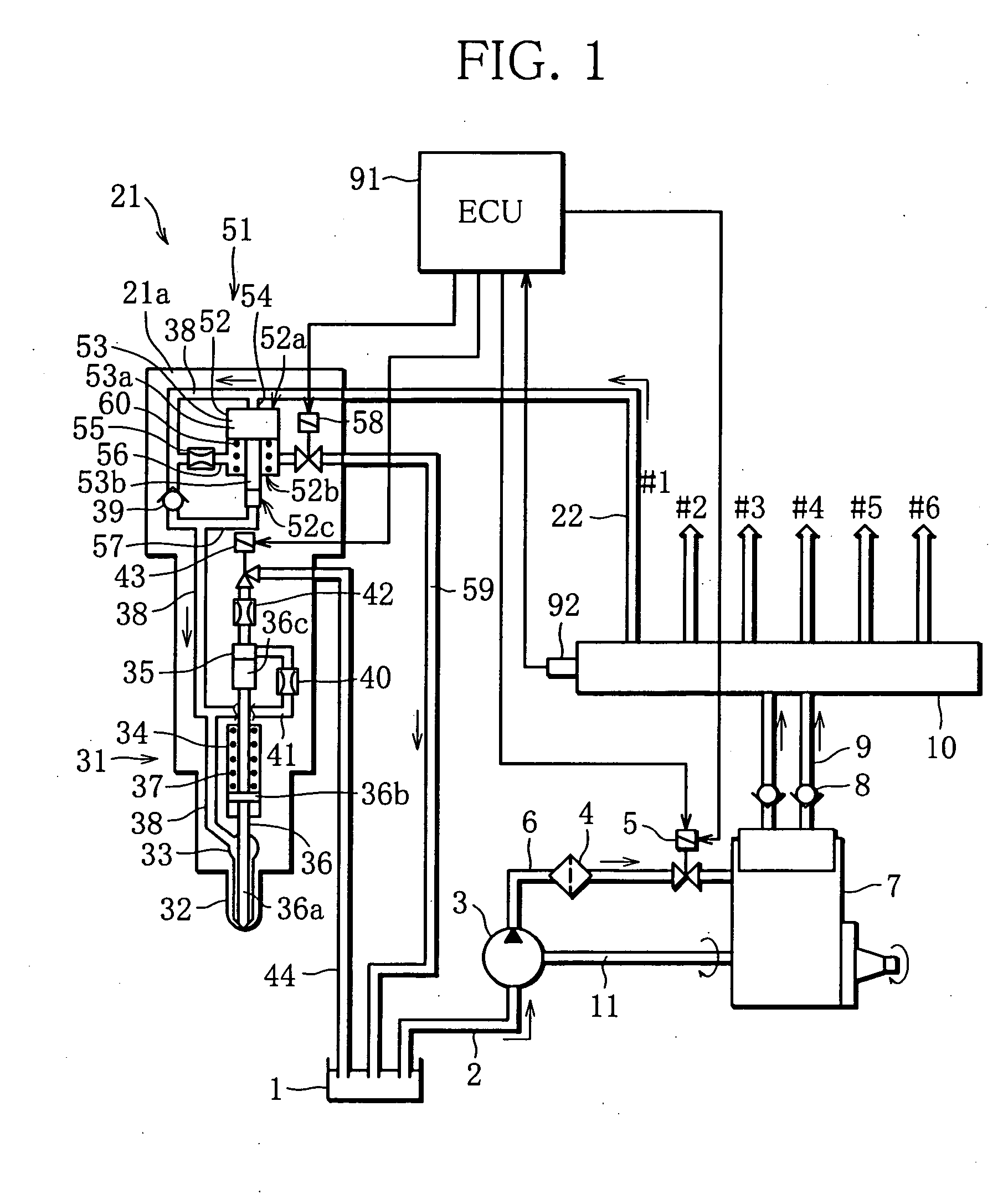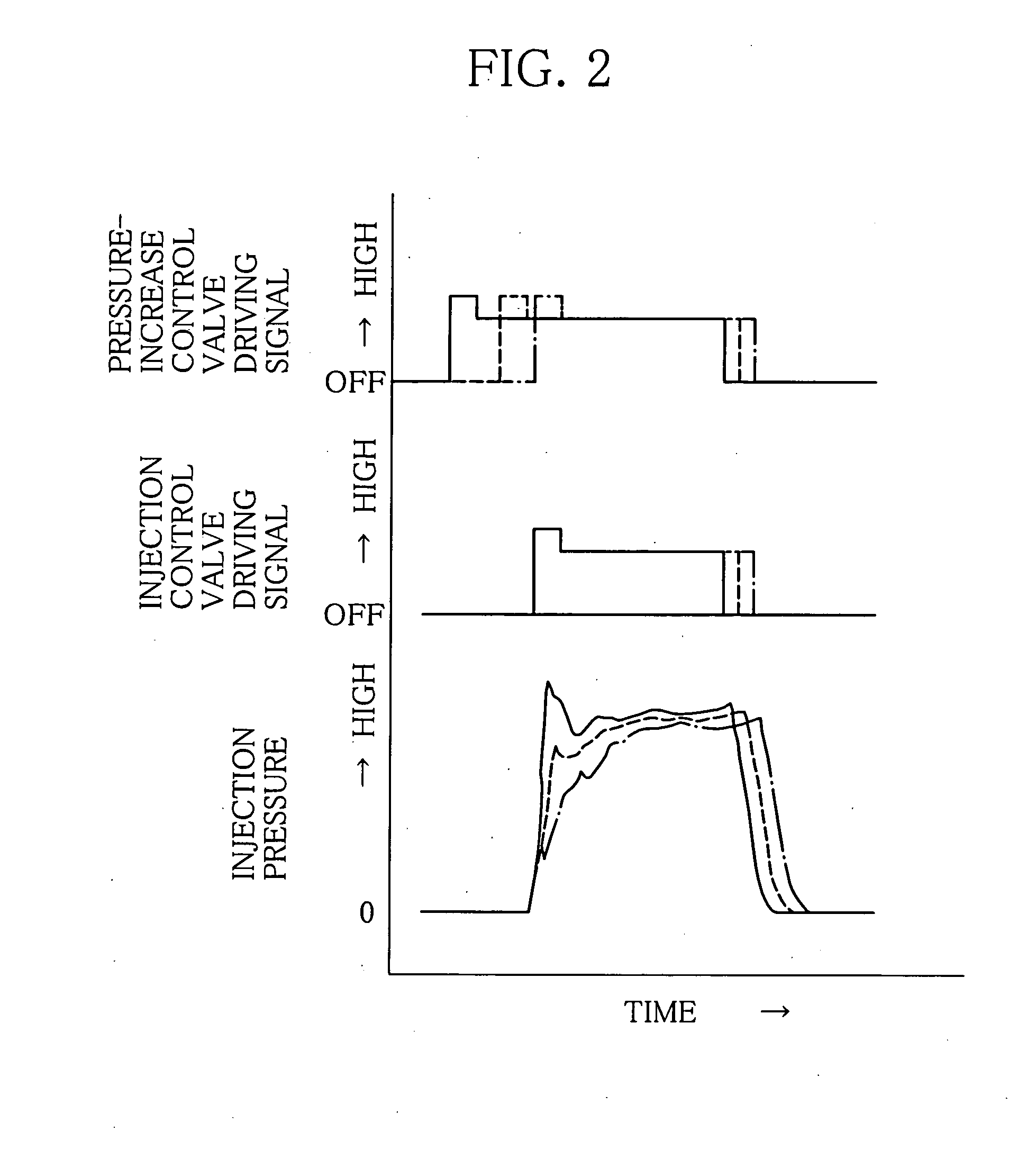Common rail fuel injection system
a fuel injection system and common rail technology, applied in the direction of fuel injection pumps, liquid fuel feeders, machines/engines, etc., can solve the problems of sudden change of combustion noise, torque shock and rotational fluctuation in the engine that drives the supply pump, deterioration of drivability, etc., and achieve the effect of arbitrarily increasing the fuel injection pressur
- Summary
- Abstract
- Description
- Claims
- Application Information
AI Technical Summary
Benefits of technology
Problems solved by technology
Method used
Image
Examples
first embodiment
[0024] A description will now be given of a common rail fuel injection system of an engine for a vehicle according to the present invention.
[0025]FIG. 1 is a diagram showing the overall construction of the common rail fuel injection system according to the first embodiment. A fuel tank 1 disposed in a vehicle is connected to a feed pump 3 via a tank fuel passage 2. The feed pump 3 is connected to a supply pump 7 (pressurizing pump), which is provided with a filter 4 and an electromagnetic fuel supply amount adjusting valve 5, via a fuel feed passage 6. The supply pump 7 is connected to a common rail 10 via a pair of fuel supply passages 9 provided with respective check valves 8. In FIG. 1, the feed pump 3 and the supply pump 7 are separated from each other, but in actuality, the pumps 3 and 7 are configured as an integral unit and driven by an engine, not shown, via a common drive shaft 11.
[0026] Fuel in the fuel tank 1 is pumped up by the feed pump 3 and supplied to the supply pum...
third embodiment
[0073]FIG. 11 is a time chart showing how fuel pressure is increased for fuel injection during the pressure-increase timing control. It should be noted that how the pressure-increase timing control is carried out is identical with how the pressure-increase time period control in the third embodiment described above and illustrated in FIG. 9, and description thereof is therefore omitted.
[0074] In short, the pressure-increase timing control is to control the timing of pressure increase in place of the period of time for which fuel pressure is increased, which is controlled by the pressure-increase time period control described above. Specifically, when the pressure-increase flag is set due to a rapid increase in required load, the timing of opening of the pressure-increase control valve 58 of each cylinder is gradually changed at a predetermined rate of change from the retarded side to the advanced side as shown in FIG. 11 in the delay time period t5, and after the lapse of the delay ...
PUM
 Login to View More
Login to View More Abstract
Description
Claims
Application Information
 Login to View More
Login to View More - R&D
- Intellectual Property
- Life Sciences
- Materials
- Tech Scout
- Unparalleled Data Quality
- Higher Quality Content
- 60% Fewer Hallucinations
Browse by: Latest US Patents, China's latest patents, Technical Efficacy Thesaurus, Application Domain, Technology Topic, Popular Technical Reports.
© 2025 PatSnap. All rights reserved.Legal|Privacy policy|Modern Slavery Act Transparency Statement|Sitemap|About US| Contact US: help@patsnap.com



